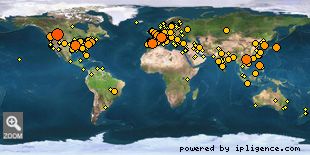 » NMR Jobs
» NMR Jobs |
|
|
|
|
|
|
 » Cool papers
» Cool papers |
|
|
|
|
|
|
 » NMR books
» NMR books |
|
|
|
|
|
|
 » NMR theses
» NMR theses |
|
|
|
|
|
|
 » NMR blogs
» NMR blogs |
|
|
|
|
|
|
 » NMR news
» NMR news |
|
|
|
|
|
|
 » NMR tweets
» NMR tweets |
|
|
|
|
|
|
 » NMR videos
» NMR videos |
|
|
|
|
|
|
 » NMR pictures
» NMR pictures |
|
|
|
|
|
|
 » Online Users: 159
» Online Users: 159 |
| 0 members and 159 guests |
| No Members online |
| Most users ever online was 1,278, 01-09-2024 at 07:38 AM. |
|
 » Welcome!
» Welcome! |
Welcome, NMR world!

Our visitors map.
|

 Short and long range 2D 15Nâ??15N NMR correlations among peptide groups by novel solid state dipolar mixing schemes Short and long range 2D 15Nâ??15N NMR correlations among peptide groups by novel solid state dipolar mixing schemes |
|
Dec 19, 2023 - 11:26 AM - by nmrlearner
|
 Short and long range 2D 15Nâ??15N NMR correlations among peptide groups by novel solid state dipolar mixing schemes
Short and long range 2D 15Nâ??15N NMR correlations among peptide groups by novel solid state dipolar mixing schemes
Abstract
A recently developed homonuclear dipolar recoupling scheme, Adiabatic Linearly FREquency Swept reCOupling (AL FRESCO), was applied to record two-dimensional (2D) 15Nâ??15N correlations on uniformly 15N-labeled GB1 powders. A major feature exploited in these 15Nâ??15N correlations was AL FRESCOâ??s remarkably low RF power demands, which enabled seconds-long mixing schemes when establishing direct correlations. These 15Nâ??15N mixing schemes proved efficient regardless of the magic-angle spinning (MAS) rate and, being nearly free from dipolar truncation effects, they enabled the detection of long-range, weak dipolar couplings, even in the presence of strong short-range dipolar couplings. This led to a connectivity information that was significantly better than that obtained with spontaneously proton-driven, 15N spin-diffusion experiments. An indirect approach producing long-range 15Nâ??15N correlations was also tested, relying on short (ms-long) 1HNâ??1HN mixings schemes while applying AL FRESCO chirped pulses along the 15N channel. These indirect mixing schemes produced numerous long-distance Niâ??Ni±n (nâ??=â??2â??â??â??5) correlations, that might be useful for characterizing three-dimensional arrangements in proteins. Once again, these AL FRESCO mediated experiments proved more informative than variants based on spin-diffusion-based 1HNâ??1HN counterparts.
... [Read More]
|

 0 Replies | 171 Views
0 Replies | 171 Views
|

 [NMR paper] Characterization of the zinc finger ?-protein HVO_0758 from Haloferax volcanii: biological roles, zinc binding, and NMR solution structure [NMR paper] Characterization of the zinc finger ?-protein HVO_0758 from Haloferax volcanii: biological roles, zinc binding, and NMR solution structure |
|
Dec 15, 2023 - 5:49 AM - by nmrlearner
|
 Characterization of the zinc finger ?-protein HVO_0758 from Haloferax volcanii: biological roles, zinc binding, and NMR solution structure
Characterization of the zinc finger ?-protein HVO_0758 from Haloferax volcanii: biological roles, zinc binding, and NMR solution structure
It is increasingly recognized that very small proteins (?-proteins) are ubiquitously found in all species of the three domains of life, and that they fulfill important functions. The halophilic archaeon Haloferax volcanii contains 282 ?-proteins of less than 70 amino acids. Notably, 43 of these contain two C(P)XCG motifs, suggesting their potential to complex a zinc ion. To explore the significance of these proteins, 16 genes encoding C(P)XCG proteins had been deleted, and the majority of...
More...
|

 0 Replies | 106 Views
0 Replies | 106 Views
|
|
 » BioNMR wiki
» BioNMR wiki |
|
|
|
|
|
|
 » NMR discussion
» NMR discussion |
|
|
|
|
|
|
 » NMR conferences
» NMR conferences |
|
|
|
|
|
|
 » NMR software
» NMR software |
|
|
|
|
|
|
 » Pulse sequences
» Pulse sequences |
|
|
|
|
|
|
 » NMR community
» NMR community |
|
|
|
|
|
|
 » NMR presentations
» NMR presentations |
|
|
 » NMR web resources
» NMR web resources |
|
|
|
|
|
|
 » NMR feature requests
» NMR feature requests |
|
|
 » NMR bookmarks
» NMR bookmarks |
|
|
|
|
|
|
 » Stats
» Stats |
Members: 3,202
Threads: 25,759
Posts: 26,145
Top Poster: nmrlearner (23,203)
|
| Welcome to our newest member, bpadmanabhan |
|



